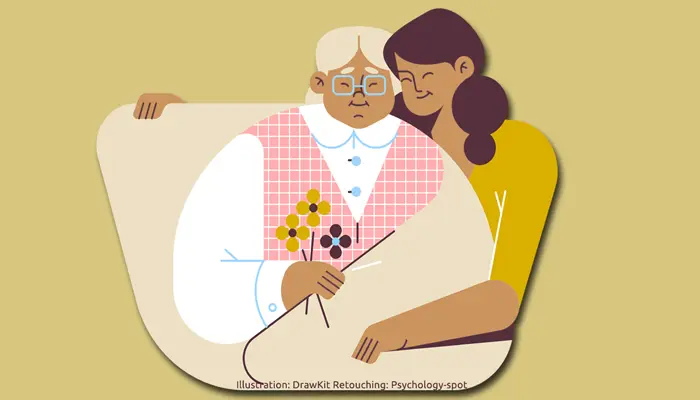
For centuries, intelligence has been linked to logic. It was thought that being smart would ensure success in life. But in recent years, new types of intelligence have emerged, which are better predictors of success, satisfaction, and well-being than the mere intellectual quotient. Today we know that developing emotional intelligence is more important than having a high intellectual quotient.
There are different types of intelligence, but one of the most interesting is the most underrated, the compassionate intelligence. When we show compassion is produced a small miracle because we are not only helping the other, but also ourselves. So, nothing better than applying the phrase of the Dalai Lama: “If you want others to be happy, practice compassion, if you want to be happy practice compassion”.
The difference between empathy and compassion
Empathy is the ability that allows us put ourselves in the place of the other and experience his feelings and emotional states. It is believed that our brain is wired specifically to empathize. Thanks to mirror neurons, we can experience firsthand what others feel, especially when it comes to people close to us.
However, compassion is a higher stage because it implies an informed level of compromise to alleviate the pain or suffering of others. In fact, although many people confuse it with pity, it really is a very complex ability that would be desirable to develop.
Compassion has three main components:
1. Emotional, is an emotion that occurs when we see someone suffering, which generates a strong reaction in the brain-related to wellness.
2. Cognitive, involves paying attention to the suffering of others, evaluating the intensity, and reflecting on our ability to intervene effectively.
3. Behavioral, involves a conscious commitment to do something to relieve the sufferings of that person.
The incredible benefits of compassion
Connecting significantly with others helps us have better mental and physical health and even allows us to recover faster from illnesses.
Apparently, the key lies in the fact that compassionate intelligence improves our psychological well-being simply because the act of giving is more pleasant than receiving.
A study conducted at the National Institutes of Health showed that the “centers of pleasure” in the brain; that is to say, the parts that are activated when we feel pleasure, respond to both when we receive money and when we donate it for charity.
In another experiment conducted at the University of British Columbia, participants received a sum of money. Half of them were instructed to spend the money for themselves, the other half was told to spend them for the others. In the end, those who spent money for the others reported being happier than those who spent the money for themselves.
Another reason why compassion is so beneficial is that it creates a positive state of well-being, a serene happiness that has enormous repercussions at physical level.
In fact, a study at the University of California revealed that cellular inflammation levels of compassionate people that were considered “very happy” were very low. Inflammation is a precursor of many diseases, including cancer and neurodegenerative diseases.
But the curious side of this study was that people who were considered “very happy” simply because they lived a “good life”, which was related to hedonistic happiness, had higher inflammation levels.
This indicates that it is not only happiness, but what is known as eudaimony, a word derived from Greek and which is mistakenly translated as happiness, but in reality means the fullness of being. The researchers found that people with low levels of inflammation were those who could make sense of their life, where compassion played an important role.
Compassion can be learned
Richard Davidson, a neuroscientist at the University of Wisconsin, decided to analyze the effects of compassion in the brain. After a journey to India where he practiced meditation, Davidson met the Dalai Lama, who proposed him to study kindness, tenderness, and compassion.
In one of his experiments, he instructed participants in what is known as compassionate meditation, an ancient Buddhist technique that aims to promote charitable attitudes toward people suffering. In meditation, participants visualized a moment when someone had suffered and then wanted to alleviate his or her suffering.
The participants practiced with different types of people, starting with a dear person, someone for whom they could easily feel compassion. So they followed with themselves and then with a stranger. Finally, they practiced compassion for someone with whom they had an active conflict, a “hard person,” like a troublesome mate.
Another group of people was taught the technique of cognitive restructuring, according to which the participants had to learn to review their thoughts to be less negative.
The experiment lasted only two weeks, a relatively short time when it comes to changing feelings and appreciating changes in the brain.
Then Dadvidson tested the compassion of the participants asking them to participate in an altruistic game. The participants saw that one of the people in the game had given the victim only 1 dollar of the 10 that had. Then it was up to them to decide how much give of their own money.
People who had been trained in compassionate meditation were more inclined to share their money to help the victims, while those who used cognitive restructuring showed less compassion.
However, the most interesting detail was that cerebral changes were evaluated during the experiment. The images did not leave any doubt: those who practiced compassionate meditation showed an increase in the activity of the lower parietal cortex, a region involved in empathy and understanding of the others. There was also an increase in activity in the dorsolateral prefrontal cortex and in the nucleus accumbens, two areas of the brain involved in emotional regulation and positive emotions.
This means that compassion is a skill that can be developed.
An exercise to develop compassion
To develop compassion, we can begin by taking notice of what others have done for us, or that we ourselves have done for others. It is important to try to recreate the feelings and emotions we have experienced in both cases.
You can also practice this compassionate meditation exercise:
1. Focus on the present and become aware of your emotions, feelings, sensations and thoughts.
2. Think of someone you love and who is suffering. Think of the various manifestations of that suffering, regardless of whether you have observed them directly or not. Remember that suffering does not always manifest itself in the same way, and sometimes the person can try to hide it, as in the case of the smiling depression. So that active attention plays a very important role in the development of compassion.
3. Think of how you could help that person overcome his or her suffering. Desire it with all yourself. Your body is likely to react to this mental mobilization. Keep this thought for a moment and concentrate on your sensations.
4. Think of your suffering and move the desire to help and improve others to yourself. This step will help you self-compassion, so that you will develop a better relationship with yourself.
You can repeat this exercise first with a stranger and then with someone you do not like, in which case the exercise will be very liberating because it will also help you to get rid of hatred and rancor.
And always remember this phrase of the Nobel Peace Prize winner Albert Schweitzer: “Until he extends his circle of compassion to include all living things, man will not himself find peace”.
Sources:
Davidson, R. et. Al. (2013) Compassion Training Alters Altruism and Neural Responses to Suffering. Psychological Science; 24(7): 1171–1180.
Fredrickson, B. L. et. Al. (2013) A functional genomic perspective on human well-being. PNAS; 110(33): 13684–13689.
Dunn, E. W.; Aknin, L. B. & Norton, M. I. (2008) Spending money on others promotes happiness. Science; 319(5870): 1687-1688.
Grafman, J. (2006) Human fronto-mesolimbic networks guide decisions about charitable donation. Proceedings of the National Academy of Sciences; 103: 15623–15628.



